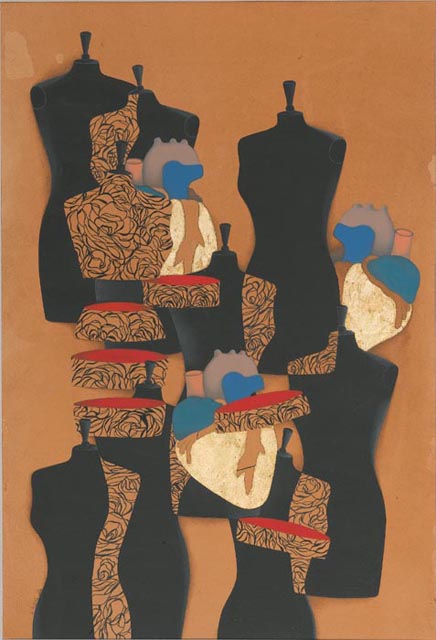
Who would think that a dummy, the fashion store mannequin, would have so much to express about the lives of real women? You find these headless, faceless, voiceless fashionistas in the work of Pakistani contemporary artist Ayesha Durrani, showing at the Aicon Gallery in New York. Without saying a word, they tell the stories of women subjugated, of lives lived on half empty.
Growing up, Durrani had attended fashion design school but soon realized that she did not want to spend the rest of her life making clothes. So she went to art school instead – and found her true calling. She received a BFA from National College of Arts, Lahore in 2003, and her work has been shown in galleries in Pakistan where she works, as well as in India, the US and in the UK.
A feminist, Durrani is unusual in that she grew up in Peshawar, in the North-west frontier region of Pakistan, which has a very male dominated society. She certainly marched to the beat of a different drummer, following her own path. She even retained her maiden name after marriage, and now lives and works in Lahore. Her current work is all about the sacrifices women make and how they start falling apart in the end.
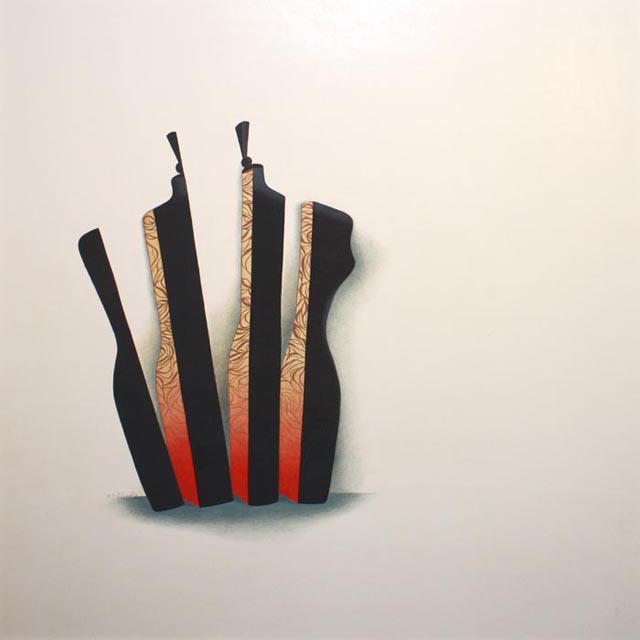
“The mannequins stayed with me from my stint at the design school,” says Durrani. “I use the mannequin to symbolize women. “The mannequins don’t have heads because no one is interested in what women are thinking. Like the popular saying goes ‘Women should be seen and not heard.’ Everyone is interested in the woman’s body but not her mind.”
The connections between mannequins and the realities of real women persisted in Durrani’s mind and mannequins started populating her canvases. “I started slicing up the mannequins to show the way women struggle with themselves in order to fulfill the demands made on them by society, and in the process they lose themselves and their identity.”
Ask her how her art has been received in Pakistan, especially by males, and she says: “Everyone asks me this question! I have never gotten any negative feedback about my work, from men or women, even though my work is considered very feminist. The reason is probably because my work is subtle and the medium of miniature painting is visually pleasing and not threatening, so people can take it in their stride.”
Surrounded by her work at the Aicon Gallery, I asked her to walk with me and explain some of the subtext and the inspiration behind her paintings.
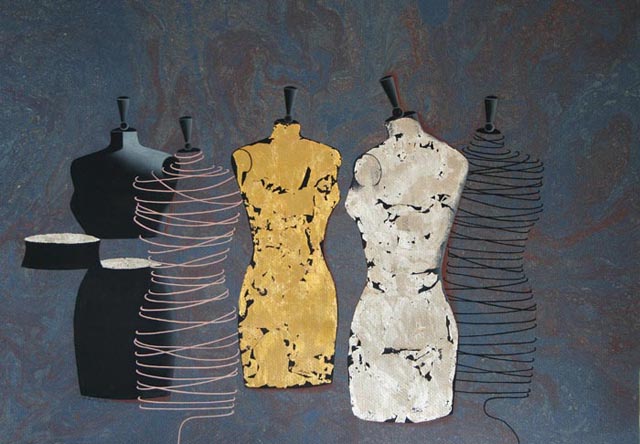
Tarnished Idols:
This painting is about the traditions and social pressures that bind women, hence the ropes and threads.
It is also about the concept people have of women being pure and perfect. I don’t know where women got this persona of perfection. Everyone expects them to be perfect, whereas they are not. They have faults like men do, but women are not even allowed to make mistakes. They are put on pedestals and if they make a wrong move they are condemned. On the other hand, men can get away with anything because ‘men will be men.’
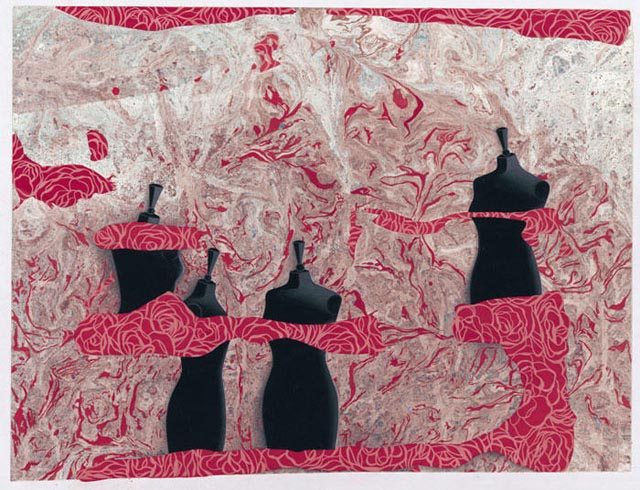
Fairy Tales:
This painting is about the way women weave their dreams. They have this idea of Prince Charming sweeping them off their feet and saving them from all evil and then living happily ever after. I object to this idea of women being helpless and needing to be saved. We grow up dreaming of that prince saving us from all evil and we develop into helpless needy people. We never allow the woman to grow up as a strong, intelligent person who can take care of herself and make her own decisions. Especially in the Subcontinent, women are completely dependent on their Prince Charming – who might not be that charming after all!
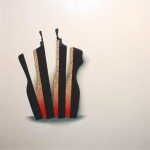
Falling Apart:
This painting is about the struggle women have to go through to make everyone happy and sacrifice her own dreams and aspirations, because a woman is automatically expected to do all that, and in the end, she loses herself and falls apart.
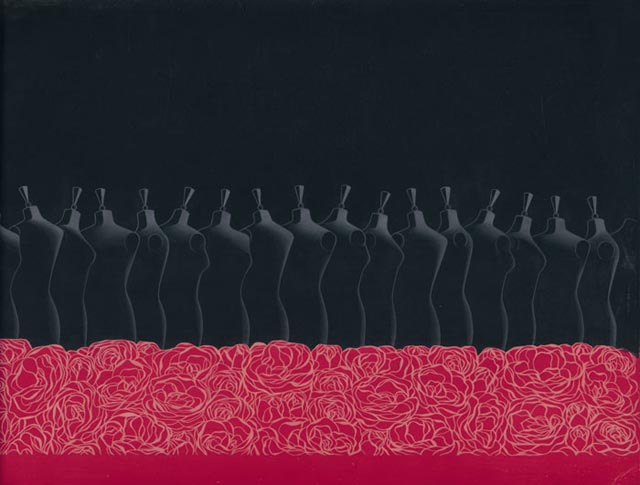
Garden of Eden:
In our part of the world, the east especially the sub-continent, women are compared to roses and our poetry is full of references to women resembling a rose. But this is all in theory and the reality is very different. These same roses are wrenched and scattered to perfume the world.
In her latest works, Durrani paints a lot of hearts but these are not the cheerful red hearts of the Valentine’s Day cards – they tell a story of pain and struggle, of the sacrifices women make to fulfill their perceived roles.
“They say a woman’s heart is like an ocean, the depth of which cannot be measured, and that it carries as many secrets,” says Durrani, in her artist’s statement. “In most societies, girls are brought up to fulfill very specific roles. They are trained to sacrifice their happiness and needs in order to make others happy. It is this concept of self sacrifice that I have tried to portray, and the price of that sacrifice that women pay.
Women are supposed to think with their hearts and not with their heads, at least that’s what we are told. This is also probably why women are not taken seriously; why people hesitate to give them positions of power and importance. In my paintings I have shown the heart as more than a muscle that pumps blood through the body.”

4 Comments
Thanks for your comments, Sumera – I’m a fan too of Ayesha Durrani’s work.
Thank you Lubna – the art is really evocative!
Hi, Ayesha Durrani’s art tells the true story of today’s women. I really like her work.
Beautiful paintings and you’ve captured it all so well.